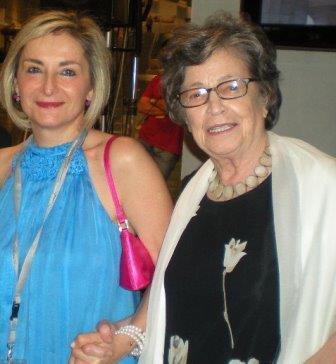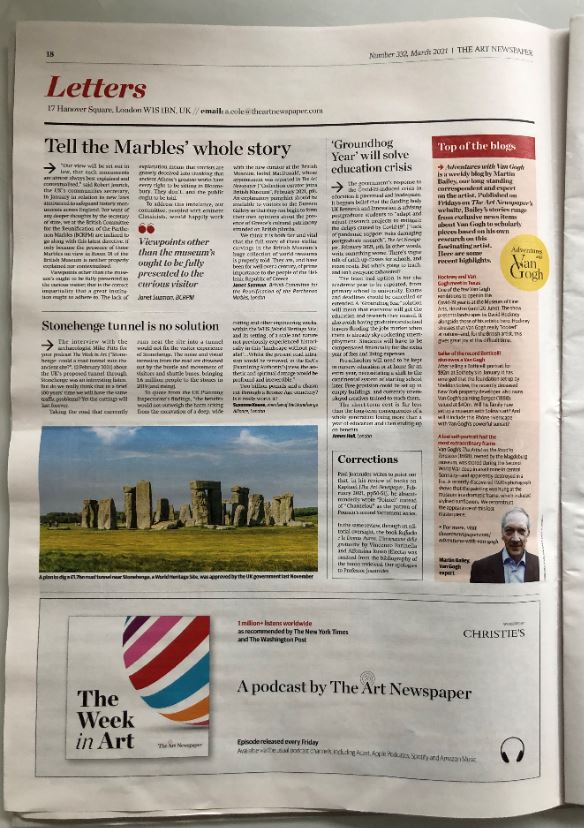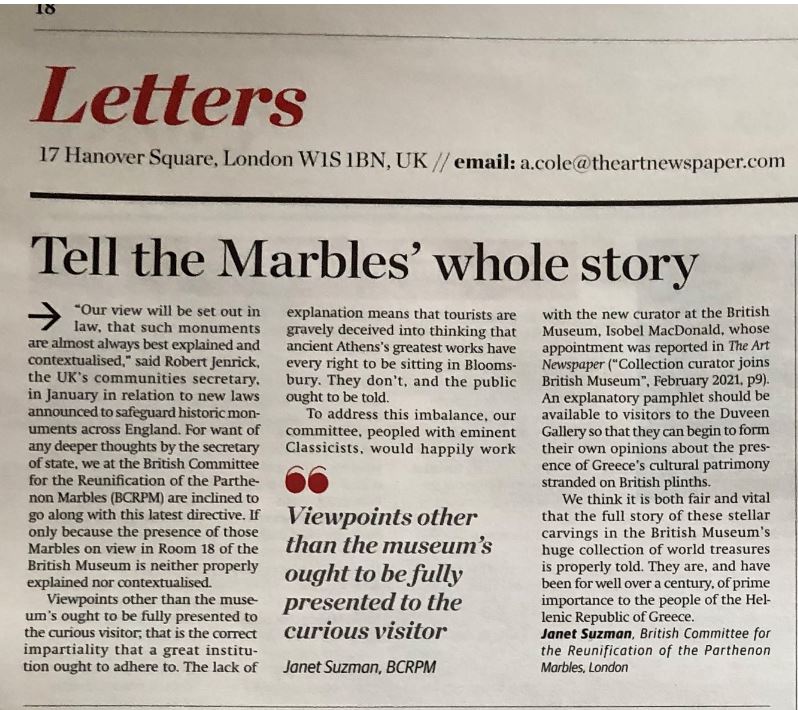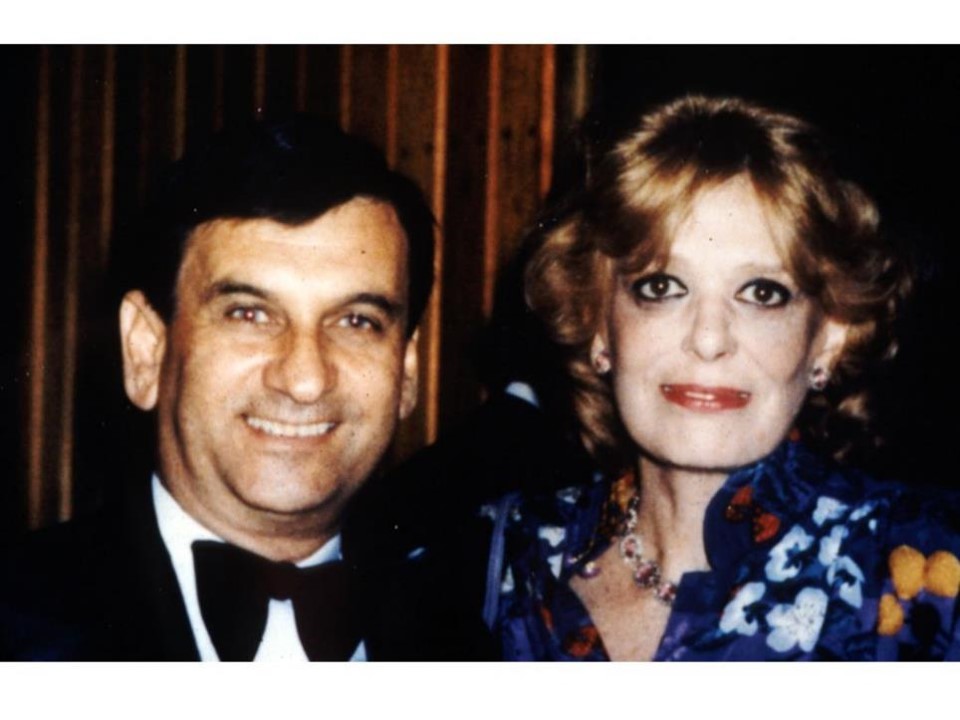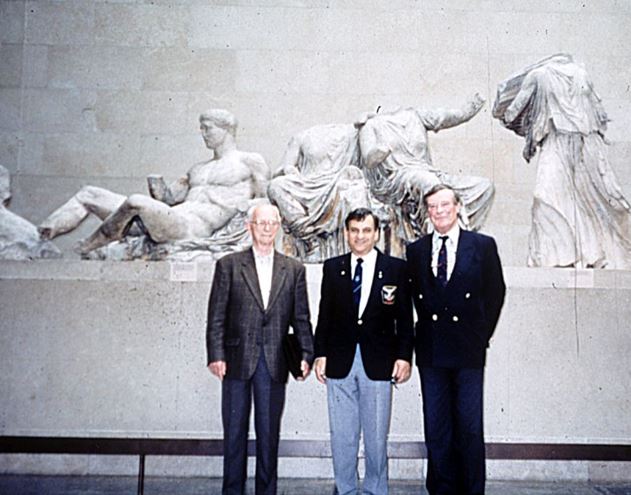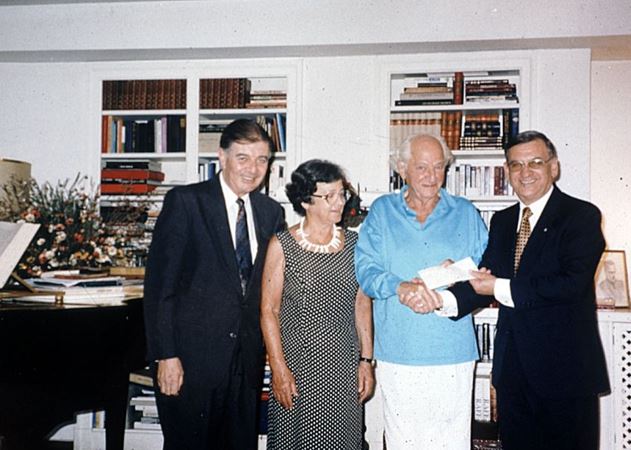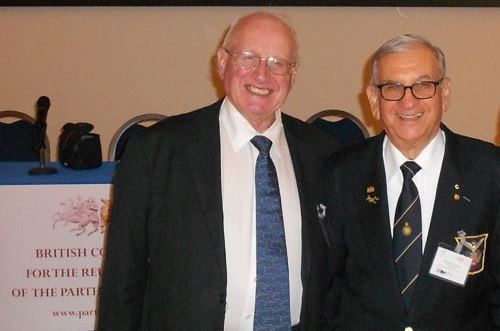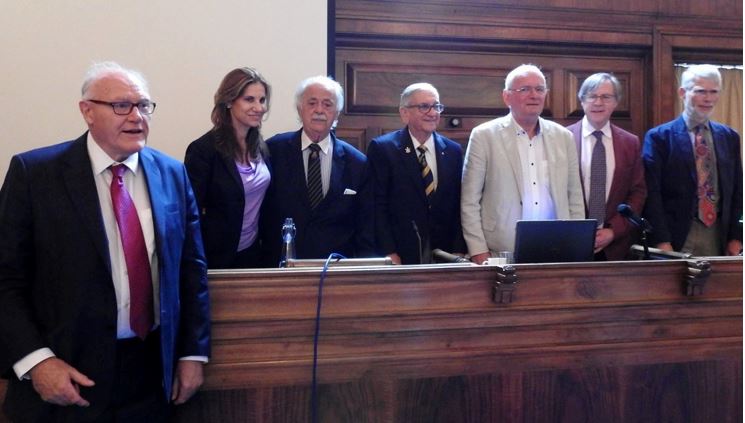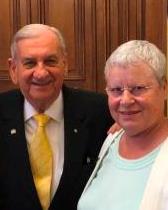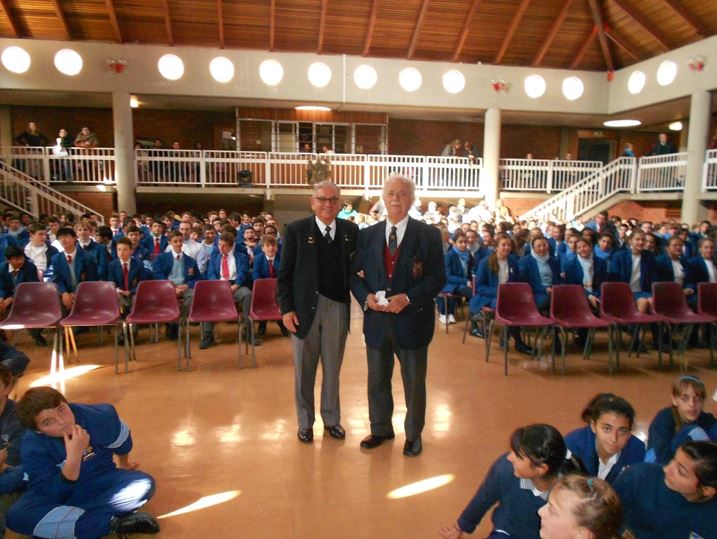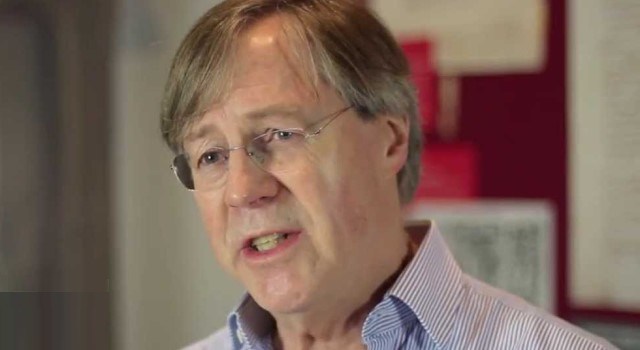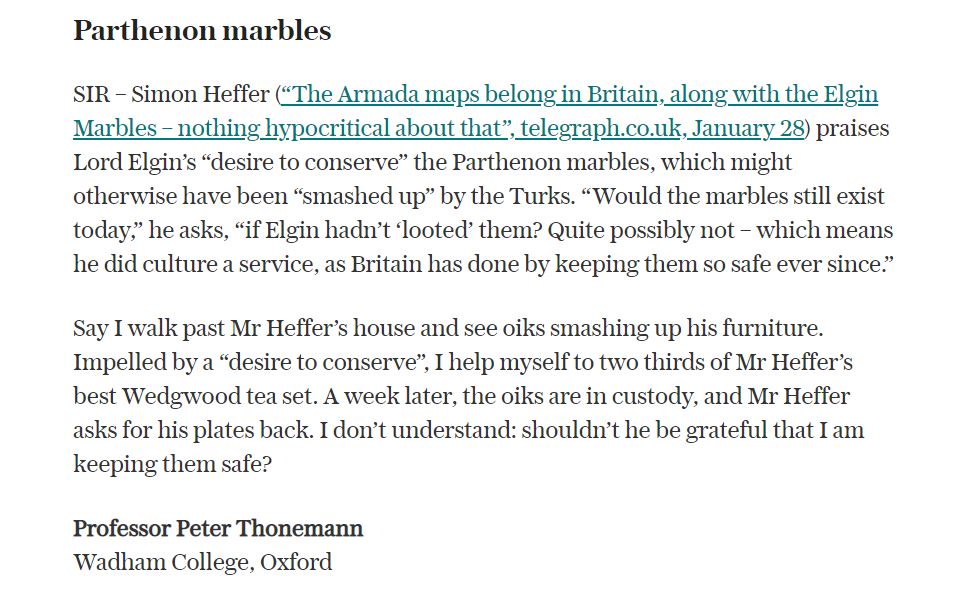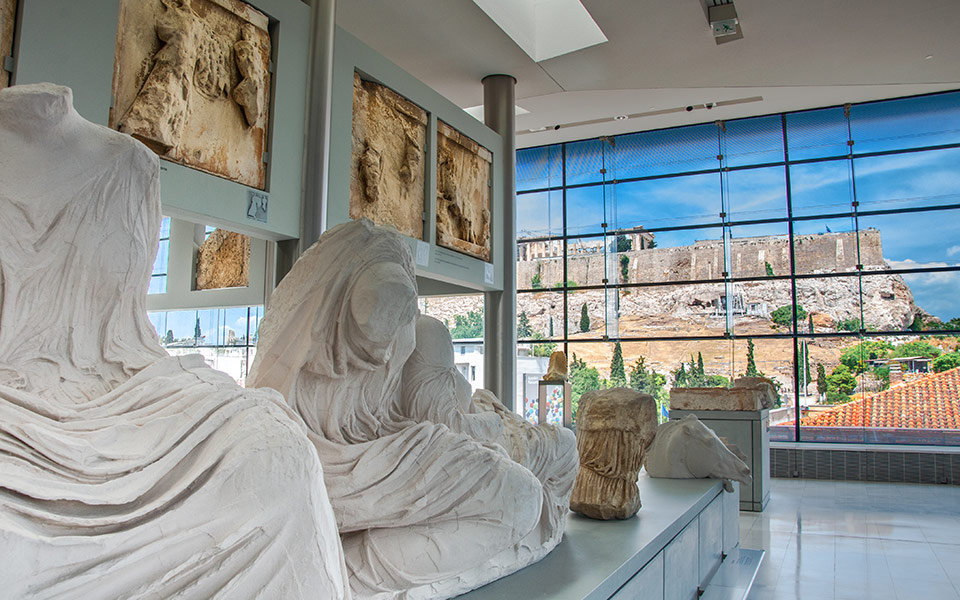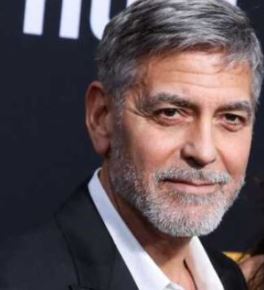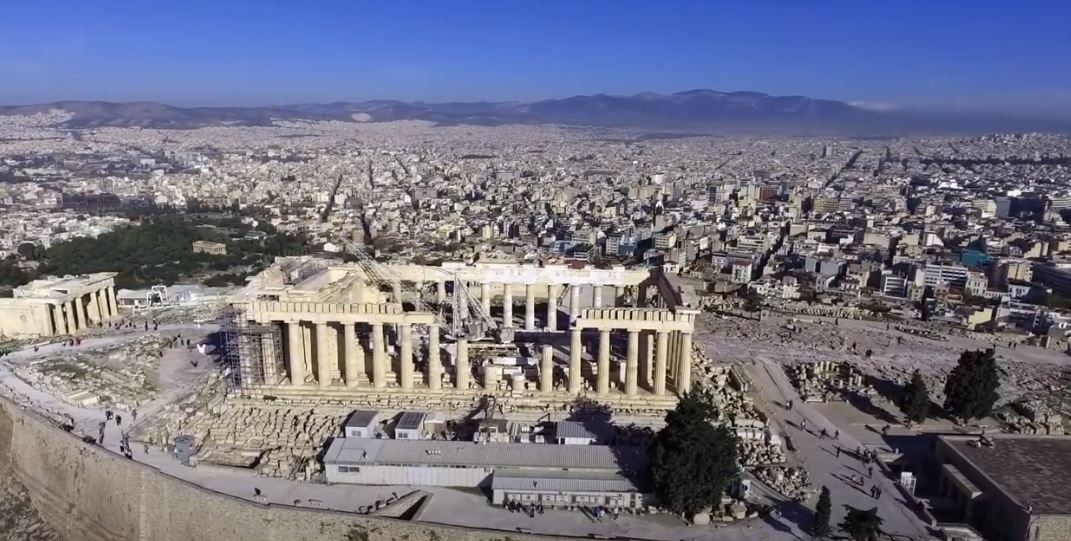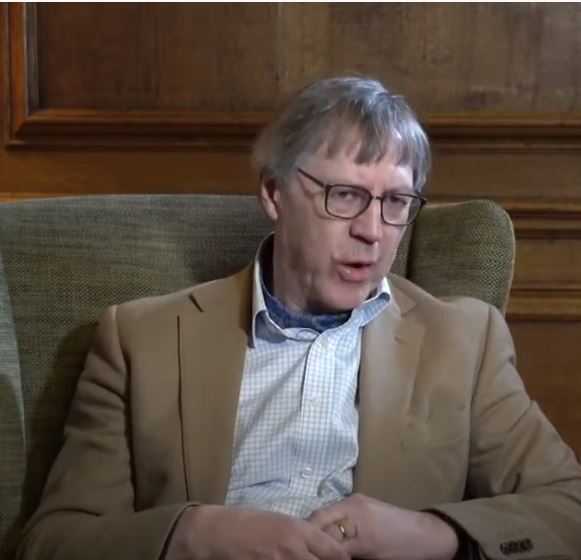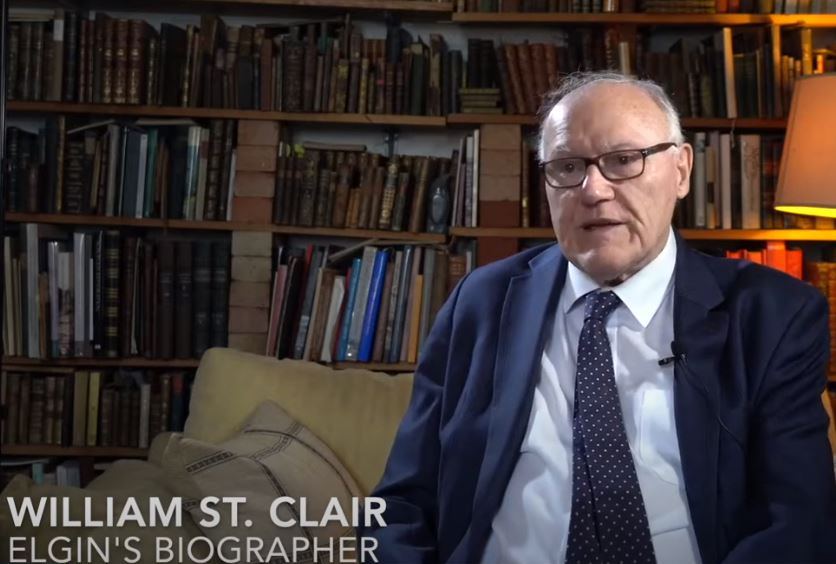In 1983 the Greek government decided, for the first time, to formally demand the return of artefacts removed from their most famous national monument two centuries before.
The Greek actress turned Minister of Culture, Melina Mercouri, said the British ambassador, Lord Elgin, had no moral right to ship 170 crates of marble sculpture from Athens to London between 1801 and 1804.
The Parthenon marbles are now housed in the British Museum in London, and Melina Mercouri visited it and spoke to the Director of the Museum, David Wilson.
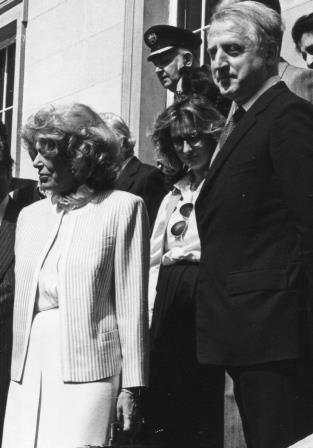
Victoria Solomonides was with Melina Mercouri and remembers the impact the former actress had on the British public.
Witness History: The stories of our times told by the people who were there.
2020: Year of Melina Mercouri
Dr Victoria Solomonidis FKC FRHistS
Member, Board of Directors of the Melina Mercouri Foundation
Why is it important that the Greek Ministry of Culture declared 2020 as the “Year of Melina Mercouri”?
The Greek Ministry of Culture declared 2020 as the Year of Melina Mercouri, a year-long series of events marking the 100th anniversary of the birth of the much-loved internationally acclaimed actress, activist, politician and former Minister of Culture. With her legacy still alive 26 years after her death, Melina’s work was to be highlighted and remembered through exhibitions, lectures, concerts and film screenings.
The inaugural celebration took place last January at the Acropolis Museum, Melina’s most cherished project, though this ambitious programme was hampered by the covid-19 pandemic which led to the postponement of most of the events for 2020.
The initiative to mark this centenary was taken by Dr Lina Mendoni, the Minister for Culture & Sport and, as circumstances were to prove, the plan assumed an additional symbolic significance: Melina Mercouri was known for her indomitable perseverance and spirited optimism under adverse circumstances, her self-awareness and self-discipline, attributes vital in our challenging times, especially in the face of the pandemic.
What is, in your opinion, the legacy of Melina Mercouri to our contemporary cultural dialogues?
Melina’s legacy is multifaceted. A number of institutions encapsulate this legacy in a tangible way:
1. The Melina Mercouri Prize established by the EU Commission and awarded to the annual winners of the European Capital of Culture competition (value: 1.5 million Euros). The scheme was conceived and implemented in 1985 by Melina Mercouri as Minister of Culture and, over the past 35 years, the European Capitals of Culture have developed into one of the most ambitious cultural projects in Europe, becoming one of the best known, publicly salient EU projects. The cities are chosen on the basis of a cultural programme with a strong European dimension, a programme to engage and involve the candidate city's inhabitants and contribute to its long-term progress.
Becoming a European Capital of Culture brings renewed life to the winning cities, boosting their cultural, social and economic development. Many of them, like Lille, Glasgow and Essen, have demonstrated that the title can be a great opportunity to regenerate urban centres, bringing creativity, visitors and international recognition.
Today, Melina’s vision of the project is more relevant than ever. European Capitals of Culture highlight the richness of Europe’s cultural diversity and take a fresh look at shared history and heritage. They promote mutual understanding and show how the universal language of creativity opens Europe to cultures from across the world. Through this institution, Europeans are provided with an opportunity to learn more about each other's cultures, to enter into an intercultural dialogue and to enjoy shared history and values. It is of particular importance that as of 2021 and every third year, the initiative will be open to cities in EU candidate countries or potential candidates for EU membership.
This development would have been be particularly welcome to Melina. Even before the fall of the Berlin Wall, a fruitful and constructive dialogue with the countries of Eastern Europe began on her initiative when in 1988, during the second Greek EU presidency and despite the strong reservations of her European counterparts, she promoted the idea of cultural cooperation between Eastern Europe and the European Union in a bid to open up the borders. The idea was implemented in 1989 with the celebration of an EU sponsored Month of Culture in Eastern countries. The initiative to open up the European City of Culture to countries outside the EU family, would be a source of great satisfaction for her.
2. The UNESCO-Greece Melina Mercouri International Prize for the Safeguarding and Management of Cultural Landscapes was established in 1995, to reward outstanding examples of action aimed at safeguarding and enhancing the world’s cultural landscapes, defined as the combined works of nature and man, a category of the World Heritage List.
Valued at US $30,000, the Prize is awarded every two years to an individual, an institution or a non-governmental organization for outstanding efforts to protect and manage sites that embody an enduring, intimate relationship between people and their environment, in the face of numerous threats, such as unplanned infrastructure development and urbanization, lack of agents to manage landscapes due to depopulation and changes in traditional ways of life, as well as increasing disaster risks and the effects of climate change.
The latest Prize was awarded in November 2019 during the 40th Session of the UNESCO General Conference. The recipient was the Instituto do Património Cultural in Cabo Verde for its outstanding contribution to the safeguarding, management and sustainable development of the Natural Park of Cova, Paul and Ribeira da Torre, an emblematic example of Cabo Verde’s mountain wetlands and one of its most important agricultural ecosystems. The prize money will be used to elaborate a Management Plan, create a centre for landscape interpretation, train young tourist guides and promote female entrepreneurship.
3. The Melina Mercouri Drama Award, presented annually by the Melina Mercouri Foundation to the best young actress of the previous theatre season in Greece. In addition to the prize money of 3.000 Euros, the recipient receives Melina’s favourite brooch as a precious, unique trophy to hold for one year and pass on to the next award winner.
Established in 2007, the Award is highly prized, and the annual award ceremony is one of the highlights of the theatrical season. The Jury consists of five eminent theatre personalities, chaired by the legendary actress Maya Lyberopoulou.
In October 2020, the 14th Melina Mercouri Drama Award was presented to Dimitra Vlagopoulou, for her performance in "The tragic story of Hamlet, a prince of Denmark", based on the eponymous Shakespeare tragedy. Under Covid-19 restrictions, the ceremony took place at the National Theatre, in the presence of the President of the Republic Mme Katerina Sakellaropoulou and the Minister of Culture and Sport Dr Lina Mendoni.
Alongside the Melina Mercouri – Jules Dassin Scholarships, offered annually by the Melina Mercouri Foundation to young Greeks wishing to pursue research at Ph.D. level in Classical Archaeology or Greek Literature, the Drama Award reflects Melina’s concern for the younger generation and her wish to see excellence rewarded across the board.
These institutions epitomize Melina’s concern for humanity at large, for the value of culture and cultural heritage in bringing people together, for the importance of the younger generation and its aspirations. Back in 1982, addressing the UNESCO World Conference on Cultural Policies, she said: “It is time to declare that the concepts of “foreign” or “other” should revert to their first meaning; that is, different or perhaps unique, but never better or worse, bigger or smaller. Let us here together, and each one of us in his or her own country, find a way to give substance to this new vision, making it a concrete reality and making it possible for children in their schools to know, to love and to appreciate the cultures of the entire world.”
Melina’s legacy is as valid today as it was back in 1982.
What is it about Melina Mercouri that has made her a longstanding symbol for Greece? Is it her contribution to arts, culture, politics or something else beyond these? How do you believe, people remember her?
Melina was, and still is, synonymous with “passion”, “drama”, “philosophy”, “justice”, “moral values”, “self-sacrifice”, notions that stem from our ancient Greek heritage and are as classic as the stones of the Athenian Acropolis. From the days of her struggle against the junta of the colonels, and later on, as an MP and Minister of Culture, Melina was a Greek heroine who fought against the injustices inflicted upon the common people. Culture, politics and the arts were the three different roads she walked at the same time, all leading to the same destination: the creation of a better world through mutual understanding and respect.
The general public remembers Melina for her passionate quest for the return of the Parthenon Sculptures, for “putting Greece on the map” in terms of contemporary cultural cooperation and enterprise and, crucially, for her love of Greece and its people, a love reciprocated widely, as evidenced by the hundreds of thousands of Athenians who followed her funeral cortege back in 1994. Melina had voiced her fear that she might be forgotten after her death. How wrong she was!
How do her roles as an artist, as a campaigner against the junta, as a politician compare, in your opinion? Would you say that Mercouri was more apt to a specific role compared to another? Which of these capacities may still have an impact on our nowadays history and how?
For Melina, culture was political, and politics were a matter of culture. She was equally successful in everything she tackled and was a prime example of a woman who took the front stage, even at a time when the female role was relegated to “behind the scenes”. Referring again to her famous UNESCO address of 1982, we read:
“Let us therefore be realists: women still represent an oppressed continent and I am profoundly convinced that one of the first duties of people concerned with cultural affairs is to fight for the humanitarian and democratic qualities of modern societies by giving women their due place in those societies.
This fight has an institutional aspect but, when the political will exists, it is relatively easy to conduct. There is also another aspect: that which relates to mental attitudes and habits which have developed over the centuries and which cannot be ended without the militant and arduous intervention of culture.”
My belief is that at the heart of all her activities, political or cultural, Melina had one great passion and that was Justice, with a capital J. To this end, she explored all possible avenues, used all her attributes and talents to the full.
Could you please tell us about the aims and activities of the Melina Mercouri Foundation? How does the Foundation contribute to keeping Mercouri’s vision for the reunification of Parthenon Marbles alive?
In line with the fundamental ideas and policies that Melina Mercouri envisioned, planned and implemented when she was Minister of Culture, our Foundation aspires to contribute to the promotion and dissemination of Greek culture in Greece and abroad. In Melina’s words, “our cultural heritage remains a leading force, our inner strength and our pride”.
In 1981, during the first days of her term of office as Minister of Culture, one of the foremost priorities she set was the project of conservation of the Acropolis monuments, including the initiative for the reunification of the Parthenon Sculptures. This choice echoed her firm conviction that, as an integral entity of unique artistic value, the Acropolis monuments convey the classical Greek spirit, while as universal symbols, they embody values, principles and ideals which contemporary societies strive to attain.
Reflecting this conviction, the Foundation has focused its activities towards the same direction and, contributing to the overall efforts of the Greek state in this field, works in close collaboration with the pertinent Greek authorities.
Melina’s vision for the reunification of the Parthenon Sculptures is today pursued by many people around the world, with national committees working towards that goal, from the UK, Belgium, France, Germany, Italy, Serbia and Russia, to Australia, New Zealand, Canada, the US, Brazil and Chile. It is heartening to see the younger generation working alongside distinguished personalities, through social media, interviews, publications and conferences in a concerted effort to inform the international community regarding the plight of the Sculptures. The Foundation works closely with the umbrella International Association for the Reunification of the Parthenon Sculptures and its Chair Dr Christiane Tytgart. Mr Christoforos Argyropoulos, the Chairman of the Melina Mercouri Foundation, chairs the Hellenic Advisory Committee for the Parthenon Sculptures set up by the Ministry of Culture in 2015.
How does the Menina Mercouri Foundation cultivate awareness about the legacy, the personality, the artistic and political trajectory and the visions of Melina Mercouri among the young generation?
As I have said, the younger generation was always at the forefront of Melina’s projects, be it internationally, through, for example, the regeneration of urban centres and the creation of work places via the institution of the European City of Culture, or nationally, with the Melina Programme aiming to link culture with education at all educational levels so that pupils and students find pleasure in learning. It is part of the Foundation’s mission to promote her legacy among the young through various programmes, such as the Drama Award and the postgraduate scholarships scheme, but also through a sustained and constant presence in the social media so enamoured of the younger generation.
The Exhibition Hall of the Foundation is open for school visits and the Melina Mercouri Archive, consisting of audio-visual material [films, documentaries, recordings], press cuttings from 1951 to the present, speeches delivered from 1982 to 1994 and some 13,000 photographs constitutes, a rich resource for research.
As all celebrations planed by the Ministry of Culture and by the MM Foundation for the Year of Melina Mercouri have been suspended, due to the coronavirus pandemic, is the Foundation going to put in place online events or does it draw up plans for future celebrations?
It is our sincere hope that this year 2021, which has such a special meaning for our country, will see the implementation of the postponed 2020 events. As things stand at present, it is difficult to make specific plans so…watch this space!
This interview was also published in the Greek Emabassy Newsletter.BCRPM thanks Dr Solomonidis for her decades of dedication to the cause, her archives and source material. Dr Victoria Solomonides worked closely with the founder of BCRPM, Mrs Eleni Cubitt.
After Melina Mercouri’s death, Eleni collaborated with successive Greek Culture Ministers on this issue.
"During my 25 years as Cultural Counsellor at the Embassy of Greece in London, I have had the pleasure and luck to work closely with Eleni. Tireless, inspired and always on the front line, she was a great friend and generous adviser. She was my great teacher. The thought that she is now joining Melina and Jules is a source of comfort," concludes Victoria Solomonidis, a member of the Board of the Melina Mercouri Foundation.
